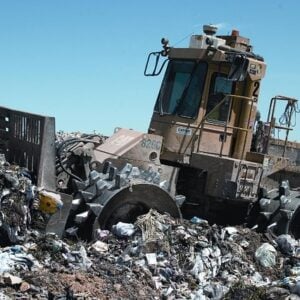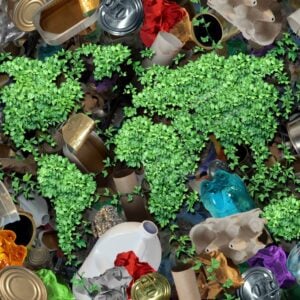
An Average Person Inhales ‘Credit-Card Amount’ Of Microplastics Weekly, According To Studies ☢️
Inhaling Microplastics ☢️: Do you ever wonder what effects our everyday activities have on us? Many of us don’t think about this, but researchers have found that the average person actually inhales roughly the same amount of plastic each week as a single credit card. Studies conducted over the past few years reveal that we constantly inhale tiny pieces of microplastics in the air and water due to normal human activities, and these things end up in our bodies, which makes it all the more scary. How are microplastics affecting us, especially at these amounts? In this blog post, we’ll explore these questions and more. So, we suggest you stay tuned for more information.
As a normal human being, what scares you the most? Heights? Snakes? Bugs? The unknown?
Well, for me, something that I truly fear is acquiring an illness unexpectedly. Not only does it damage you physically, but it also makes you paranoid all your life – leading you to enjoy life less. Numerous factors distributed across the globe can have a negative impact on your body.
>Download Now: Free PDF Business Owners Guide To General Waste Bin Services
Microplastics, in particular, are considered ‘silent killers’. Naked to the human eye, we all have inhaled an unhealthy amount of them. Unfortunately, studies have shown that we are inhaling ‘credit-card amounts’ of microplastics every week, which can lead to a number of complications.
Below, we will talk more about this study done by our brilliant Aussie researchers, as we have already mentioned above.
How are we inhaling ‘credit-card amounts’ of microplastics?
Australian researchers have recently discovered that humans inhale 16.2 bits of toxic microplastic particles every hour – which equates to inhaling a credit card’s worth of microplastics every week.
The latest publication in the journal Physics of Fluids issued a cautionary message about the grave health hazards associated with minuscule particles released during the degradation of plastic items, particularly concerning the respiratory system.
Microplastics, tiny fragments of synthetic materials, are emitted by disposable plastics like bottles and food packaging, subsequently contaminating the air, water and food in our surroundings.
Previously, scientists have uncovered microplastics in the lungs, brains, and bloodstreams of both living individuals and postmortem subjects. However, the extent to which plastic infiltrates our bodies remains a subject of ongoing debate.

In Australia, a team of researchers developed a computer model that simulates/replicates the movement and deposition of microplastics within the respiratory system when individuals breathe.
The simulation process
Three distinct shapes of microplastic particles were included in the study: spherical, tetrahedral, and cylindrical, all measuring less than six micrometres (microns). By comparison, human cells typically have an average diameter ranging from six to eight microns.
The particles were transported through the respiratory system at both slow and rapid speeds to simulate normal breathing and vigorous exercise-induced rapid inhalation, respectively.
Findings revealed that larger microplastics had a higher likelihood of becoming trapped in the airways compared to smaller ones.
The nasal cavity exhibited the highest propensity for microplastic entrapment. However, when the breathing rate increased, the likelihood of microplastics of any size becoming lodged decreased.
The study could not establish whether microplastics in the nasal cavity or trachea could enter the bloodstream.
More on the simulation process
Nevertheless, independent evidence has demonstrated that microplastics can traverse the intestinal barrier after ingestion by humans.
Concerns arise regarding the potential for microplastics lodged in the nasal cavity to cause local inflammation or serve as a surface for bacterial growth, thus raising the risk of infection.
Once in the bloodstream, microplastics may migrate to various regions within the body, potentially disrupting cellular function and triggering inflammation.
Several studies have suggested an elevated risk of DNA damage to cells and subsequent development of cancer due to microplastic exposure.
Inhaling microplastics: an onslaught of illnesses
Their findings revealed that these hazardous pollutants have a tendency to accumulate in localised regions within the nasal cavity or at the posterior part of the throat, facilitating their penetration into the deeper sections of the airways.
The presence of microplastics has been associated with the onset of cancer, heart disease, dementia and fertility issues. Concerns have also arisen about the potential for microplastics to contribute to the birth of dangerously underweight infants. This makes it all the more unfortunate, knowing that we are ‘unknowingly’ inhaling microplastics.
Dr Mohammad Islam, a data expert at the University of Technology Sydney who led the latest research, said: “Millions of tons of these microplastic particles have been found in water, air and soil.
“Global microplastic production is surging and the density of microplastics in the air is increasing significantly.”
He also mentioned that “For the first time, in 2022, studies found microplastics deep in human airways, which raises the concern of serious respiratory health hazards.”
Waster’s final thoughts
In conclusion, these findings provide new evidence for the adverse effects of inhaling microplastics. Not only can they disrupt our respiratory systems directly, but they are also a potential source of many more dangerous substances which may be inhaled into the body.
This research provides useful data on how to address this problem as our understanding of airways engineering and interactions of toxins in the environment increases.
It is our responsibility to take preventative measures to protect ourselves from such exposure and combat the effects it can have on our environment. Discussing such research with friends, family, and colleagues brings awareness and encourages others to do so as well.
What are your thoughts on this? Of course, we would certainly love to know what you think about this. It’s important to stay informed about these global issues which affect us all deeply.
More information about Waster
Does your Australian-based business need waste and recycling services? If so, then you have come to the right website!
Please call 1300 WASTER (1300 927 837). You can also email us at enquiries@waster.com.au if you have any further questions. Find the best deals in terms of waste and recycling pricing and services!
Leave a Reply Cancel reply

Product categories
Most Popular Posts
-
Commercial Waste Management Services: Reduce Waste Collection Costs! 🚍
-
Medical Waste Disposal: Everything You Need To Find Out In 2024! 💉
-
Rubbish Removal Sydney 2024: Better Bin Collections For Business ✅
-
Clinical Waste Disposal 2024: What To Know About Business Clinical Waste ⚕️
-
Secure Document Destruction 2024: All About Security Bins Shredding 🔒
-
Free Cardboard Recycling 2024: Can I Get Free Cardboard Collection? 📦
-
Confidential Paper Disposal Bins 2024: What You Need To Know About Shredding! 🔒
-
Recycling Bins Australia 2024: Recycling Can Boost Your Profits! ♲
-
Commercial Wheelie Bin Collection: What Businesses Need To Know In 2024 🗑️
-
Commingled Recycling 2024: Why Commingled Bin Is Key To Recycling 🍾













